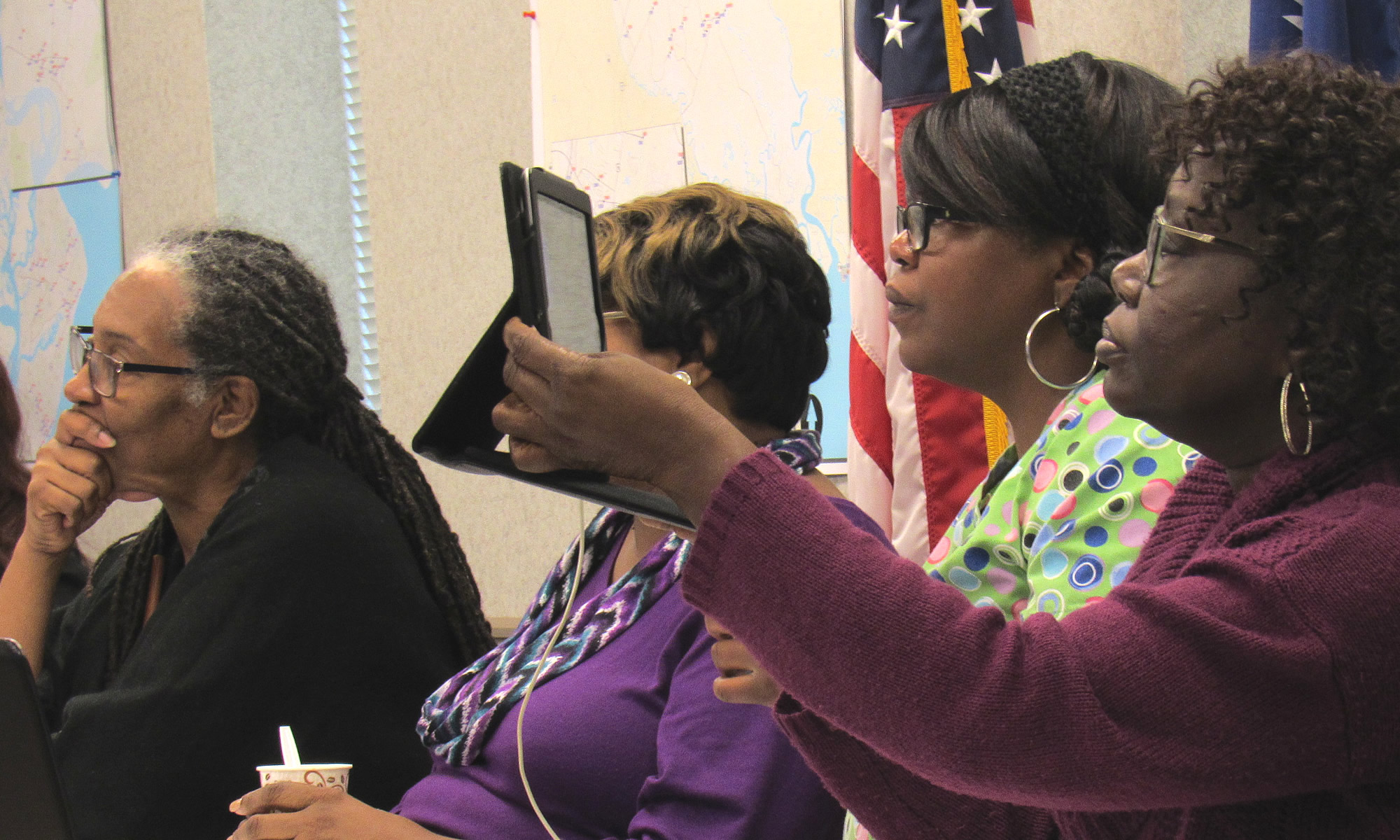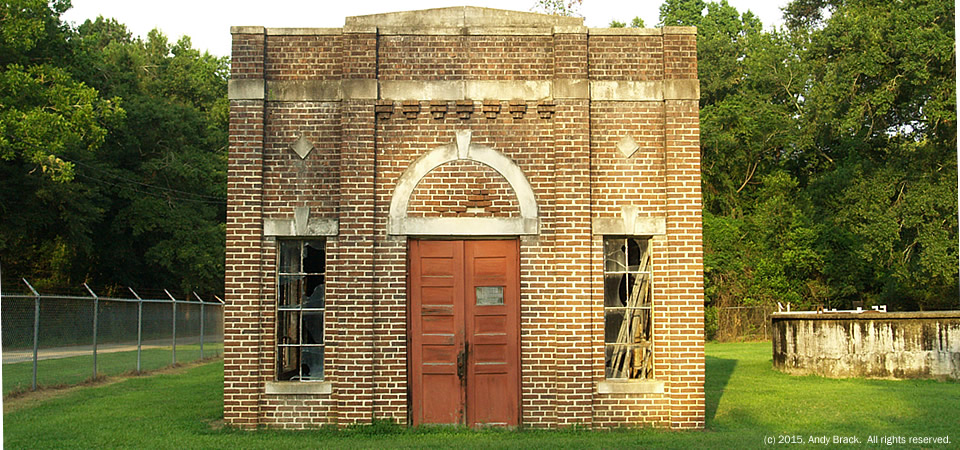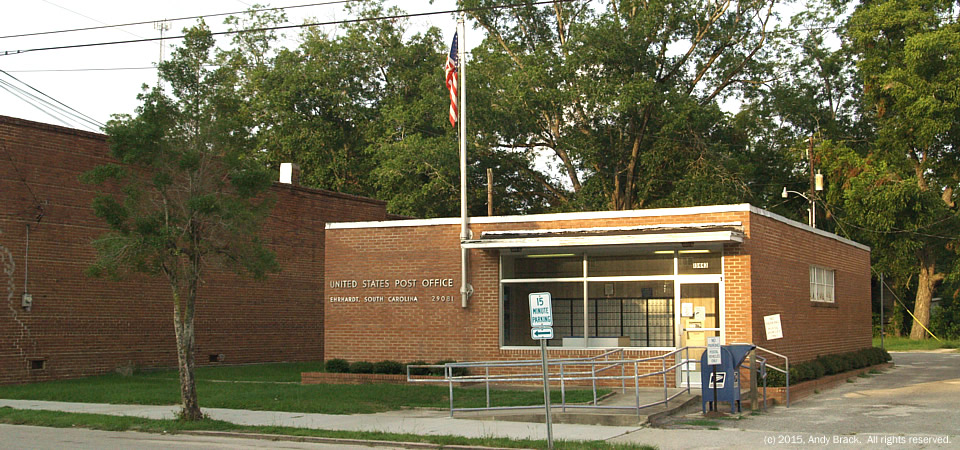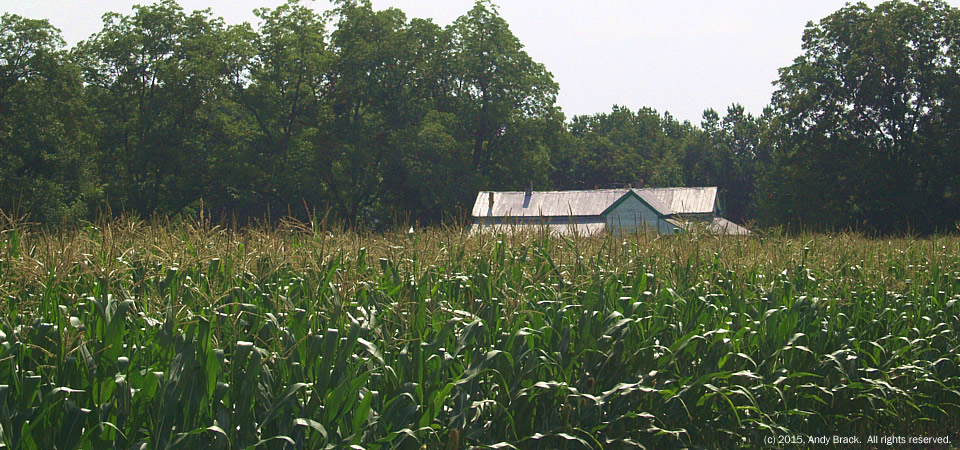This classic old public works building in Ehrhardt, S.C., illustrates how rural communities invested in infrastructure in decades past. But the broken windows highlight how some infrastructure is eroding and needs more upkeep to stay modern. Photo by Andy Brack. All rights reserved.
Post office, Ehrhardt, S.C.
A familiar feature in many small towns across the South is the standard 1960s post office, like the one pictured here in Ehrhardt, S.C. With challenges faced by the U.S. Postal Service and reductions in population in rural communities, small post offices face survival challenges. Photo by Andy Brack. All rights reserved.
Corn on a muggy day, Denmark, S.C.
Summer job, Bamberg, S.C.
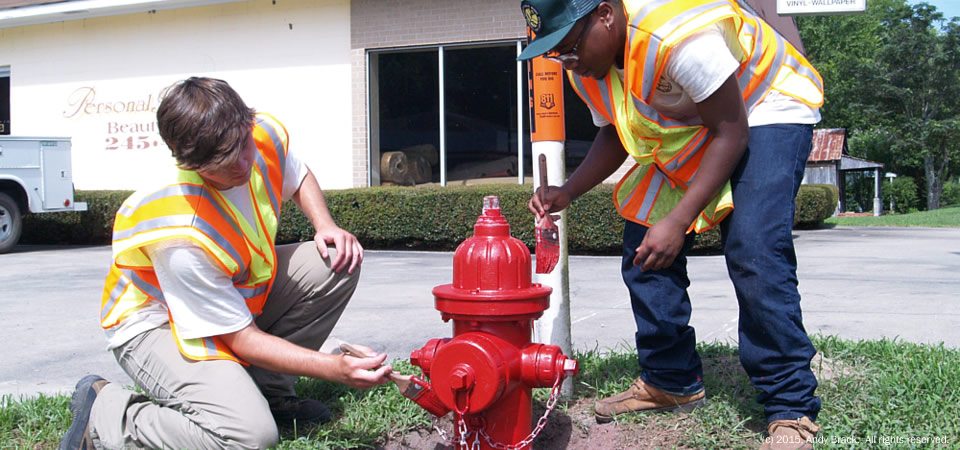
On a sweltering South Carolina summer Thursday, rising college sophomores Ethan Kemp, at left, and Robert Steedley, both of Bamberg, S.C., painted a fire hydrant in their hometown as part of their summer jobs with the public works department. Kemp attends the University of South Carolina, while Steedley attends Claflin University in nearby Orangeburg.
Just over 30 percent of the 15,987 people in Bamberg County in 2010 lived below the poverty level, according to the U.S. Census. The county included 254 people born outside of the United States. The majority of residents are black (61.5 percent) with whites comprising 36.1 percent. Some 1.6 percent of residents are Latino while 0.4 percent are of Asian descent.
- QuickFacts about Bamberg County from the U.S. Census.
Copyrighted photo taken July 9, 2015 by Andy Brack. All rights reserved.
Center to facilitate Promise Zone town hall meetings
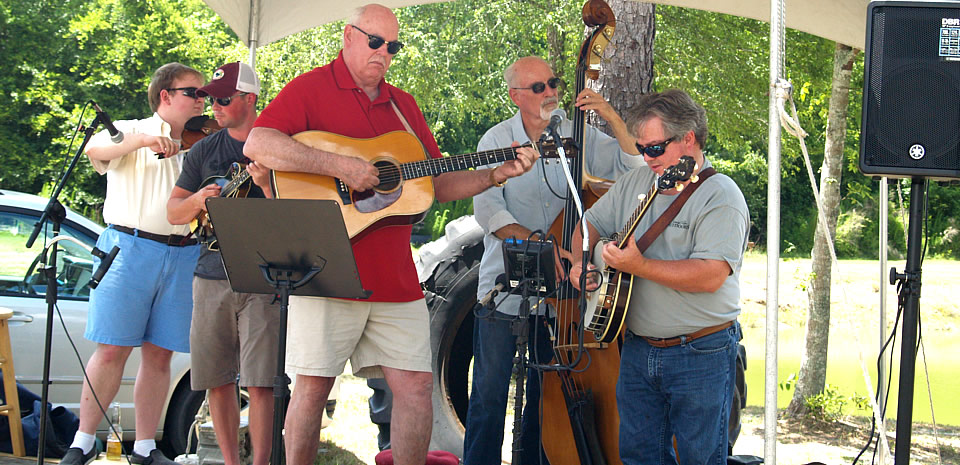
JUNE 24, 2015 — The Center for a Better South will coordinate and conduct a series of six town hall meetings in July in the recently-announced Promise Zone that encompasses six challenged counties at the southern tip of South Carolina.
“This is a phenomenal chance to interact with neighbors and leaders throughout Allendale, Bamberg, Barnwell, Colleton, Hampton and Jasper counties to share with them about the huge opportunities that the Promise Zone designation provides to grow jobs, improve education and reduce crime,” said Andy Brack, president and chairman of the Center. “These town hall sessions throughout July also will give people a chance to have their say about the strengths, weaknesses and opportunities as the region pushes forward to embrace new ways to tap into federal money to vastly improve people’s lives.”
On April 28, the Obama Administration announced the six counties in the Southern Carolina region won the nation’s second rural Promise Zone designation. Only 20 of the special designations are to be awarded across the nation. The innovative program allows Allendale, Bamberg, Barnwell, Colleton, Hampton and Jasper counties to access into federal money and other opportunities in new ways to grow jobs, improve education and reduce crime. The Southern Carolina Regional Development Alliance is coordinating the effort with the six county governments and an array of public, private and nonprofit partners.
The Alliance has contracted with the Center to conduct the town hall meetings, a key step in developing a long-term strategic plan to coordinate the myriad opportunities provided by the designation, Brack said. The Center will work with The Weathers Group, based in Columbia, S.C., to facilitate the town hall meetings.
“We’d like to encourage as many people in the counties to attend these town hall meetings so that we get as diverse and broad of community input as we can,” Brack added. “It’s open to students, neighborhood leaders, elected officials, business executives, nonprofit leaders and more.”
Here is the schedule of meetings in July:
Allendale County Town Hall meeting
- WHEN: 4:30 p.m. to 6 p.m., July 8, 2015 (doors open at 4 p.m.)
- WHERE: Science Administration Building, 465 James Brandt Blvd., USC-Salkehatchie, Allendale
- PARKING: Large parking lot outside of the building
Bamberg County Town Hall meeting
- WHEN: 8 a.m. to 9:30 a.m., July 8, 2015 (doors open at 7:30 a.m.)
- WHERE: Massachusetts Hall, Voorhees College, 213 Wiggins Dr., Denmark, SC
- PARKING: Adjacent to Massachusetts Hall
Barnwell County Town Hall meeting
- WHEN: 8 a.m. to 9:30 a.m., July 9, 2015 (doors open at 7:30 a.m.)
- WHERE: Edisto Room, SouthernCarolina office, 1750 Jackson St., Barnwell, S.C.
- PARKING: Guests are encouraged to park in the lot behind the building at 54 Irving St., Barnwell
Colleton County Town Hall meeting
- WHEN: 8 a.m. to 9:30 a.m., July 15, 2015 (doors open at 7:30 a.m.)
- WHERE: Main Classroom Building, Room 111, USC Salkehatchie, 807 Hampton St., Walterboro
- PARKING: Large parking lot outside of the building
Hampton County Town Hall meeting
- WHEN: 4:30 p.m. to 6 p.m., July 15, 2015 (doors open at 4 p.m.)
- WHERE: Market Square, 45 W. Carolina Avenue, Varnville, SC
- PARKING: Outside of the building
Jasper County Town Hall meeting
- WHEN: 8 a.m. to 9:30 a.m., July 16, 2015 (doors open at 7:30 a.m.)
- WHERE: Jasper County Council chambers, Jasper County Government Building, 358 Third St., Ridgeland, SC
- PARKING: Outside of the building
For more information, contact the Center at: brack@bettersouth.org.
Sturdy, empty station, Olar, S.C.
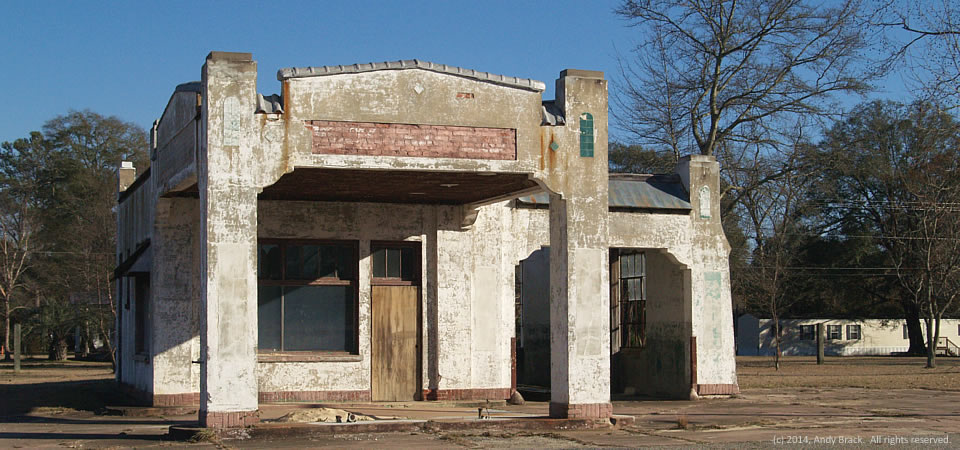
This gutted gas station in rural Olar, S.C., stands as a testament to sturdy buildings that litter the South along major highways in the days before the interstates. The empty station looks like a perfect place for a movie set for a film of a time long past.
Situated along U.S. Highway 301 in the Bamberg County town of about 200 people, it’s not hard to imagine a booming business located here in the 1950s with big, American cars zooming by and locals stopping by for a Coca-Cola and bag of peanuts. Across the street today is another abandoned gas station, competition from the past.
Bamberg County is home to about 16,000 people, 27 percent of whom live below the federal poverty level, according to 2012 Census estimates. The majority of residents are black (61.4 percent) with whites comprising 36.8 percent.
- QuickFacts about Bamberg County from the U.S. Census.
- More on Olar from Wikipedia.
Photo taken January 2014 by Andy Brack. All rights reserved.
Cross on highway, Bamberg County, S.C.
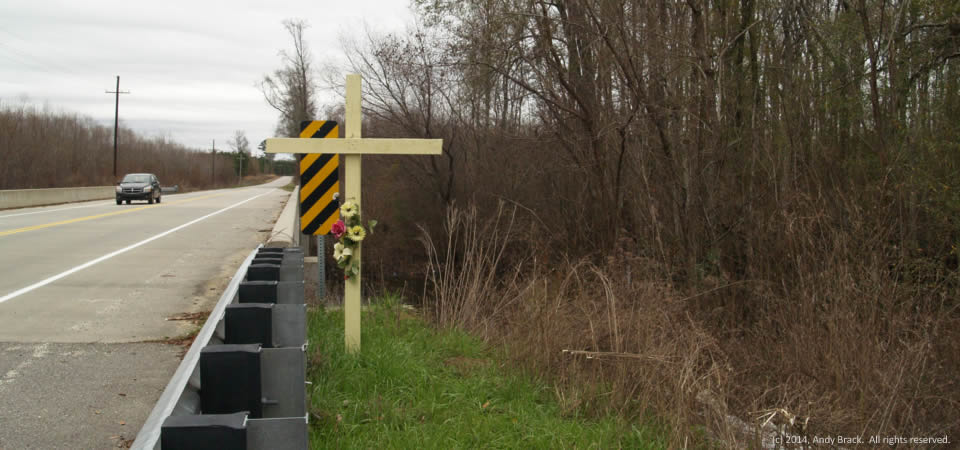
This yellow cross with plastic flowers attached is an all-too-familiar scene across the rural South. It marks the spot where someone died, likely in a terrible car crash.
This cross is located along S.C. Highway 217 next to a bridge over a swamp of the Little Salkahatchie River just inside Bamberg County near the Colleton County line.
Across the South, highway death rates are comparatively high, but have gone down in recent years thanks to improvements in safety features on vehicles.
Bamberg County is home to about 16,000 people, 27 percent of whom live below the federal poverty level, according to 2012 Census estimates. The majority of residents are black (61.4 percent) with whites comprising 36.8 percent.
- QuickFacts about Bamberg County from the U.S. Census.
Photo taken January 2014 by Andy Brack. All rights reserved.
Depot, Ehrhardt, S.C.
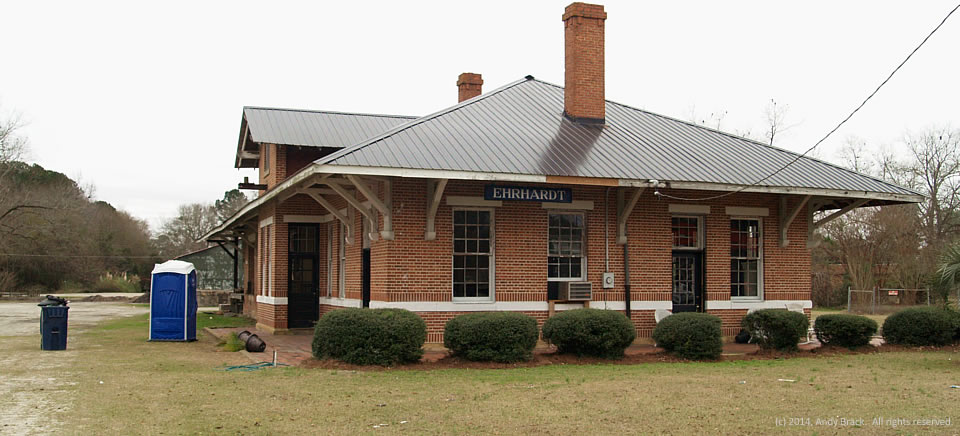
The front half of this old railroad depot in Ehrhardt, S.C., has been renovated into a place that reportedly has periodic auctions. The inside looks like a little cafe. The rear part of the depot, for which there are no railroad tracks these days, hasn’t been restored.
Ehrhardt, a town of about 600 people, is in rural Bamberg County where 27 percent of its 15,763 people live below the federal poverty level, according to 2012 Census estimates. The majority of residents are black (61.4 percent) with whites comprising 36.8 percent.
- QuickFacts about Bamberg County from the U.S. Census.
- Learn about Ehrhardt in Wikipedia.
Photo taken January 2014 by Andy Brack. All rights reserved.
Green trim, Ehrhardt, S.C.
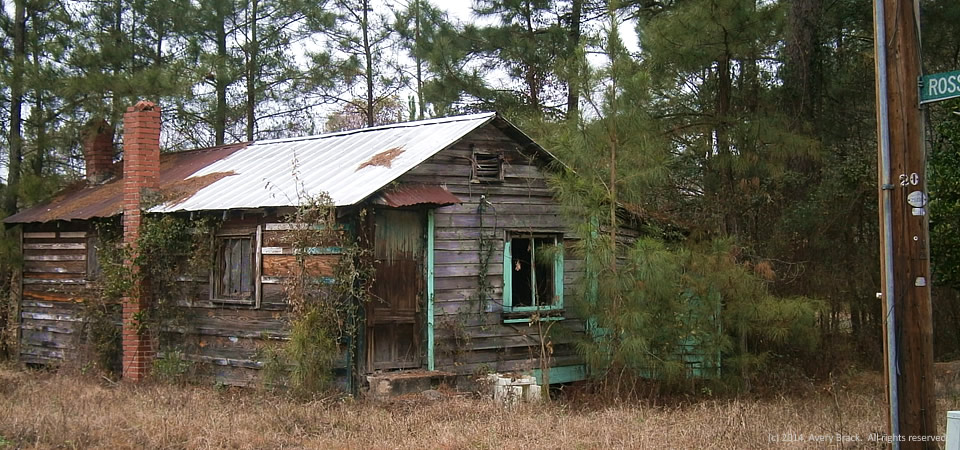
The bright green trim around this deteriorating cottage just inside Ehrhardt on U.S. Highway 601 is about all that’s left that doesn’t look worn.
The town of about 600 people is in rural Bamberg County where 27 percent of its 15,763 people live below the federal poverty level, according to 2012 Census estimates. The majority of residents are black (61.4 percent) with whites comprising 36.8 percent.
- QuickFacts about Bamberg County from the U.S. Census.
- Learn about Ehrhardt in Wikipedia.
Photo taken January 2014 by Avery Brack. All rights reserved.
Empty joint, Bamberg County, S.C.
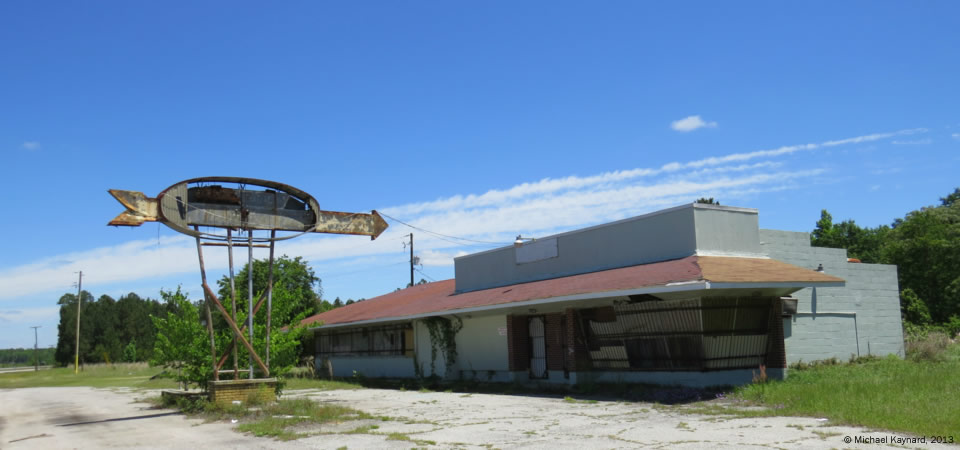
U.S. Highway 301 used to be one of the main north-south arteries for tourists heading south to Florida. But after South Carolina’s construction of its part of now-busy Interstate 95 started in 1969 and ended in 1976 [more], vehicles opted for the fast throughways over highways that slowed traffic in small towns.
This photo, taken in southern Bamberg County near the 301 intersection with S.C. Highway 64, depicts old joint that had few clues about its earlier existence. Charleston photographer Michael Kaynard speculated that the building, now boarded up with insulation pressing against big glass windows, first was some kind of restaurant and gas station which succumbed to being a rural club before withering.
“Driving down Hwy 301 is depressing,” Kaynard writes. “So many businesses are closed. This road was killed by the Interstate and one business after another just could not make it.
“This particular place is somewhat of a mystery. I was attracted by the large arrow, just as travelers were many years ago. There were so many choices that the businesses had to install attention-getting signage to attract customers. The lettering on the sign was so faded that I could not make out a name or what type of business it was. If I had to guess I would think that, originally, it was a combination restaurant and gas station. It would be really interesting to find out if I guessed correctly.”
If anybody has any clues about what this once was, let us know through our contact page.
Photo taken May 6, 2013, by Michael Kaynard, Kaynard Photography, for the Center for a Better South. All rights reserved.
- QuickFacts about Bamberg County from the U.S. Census.
